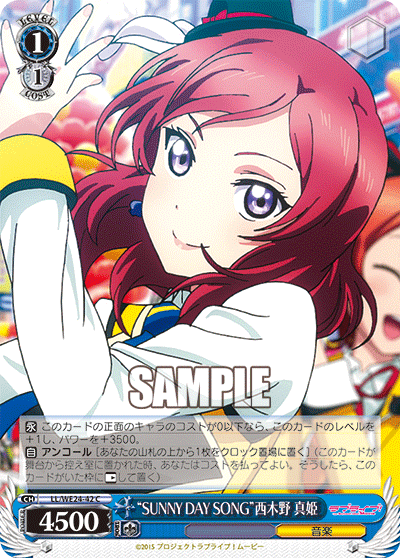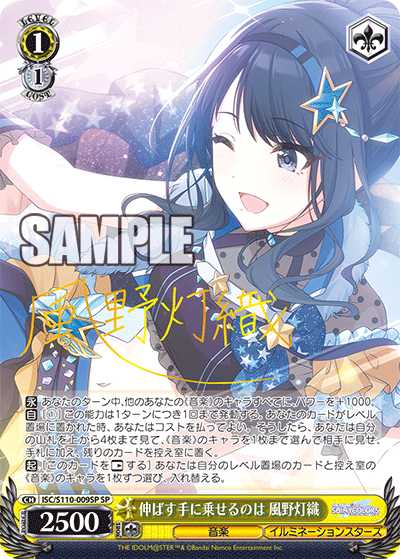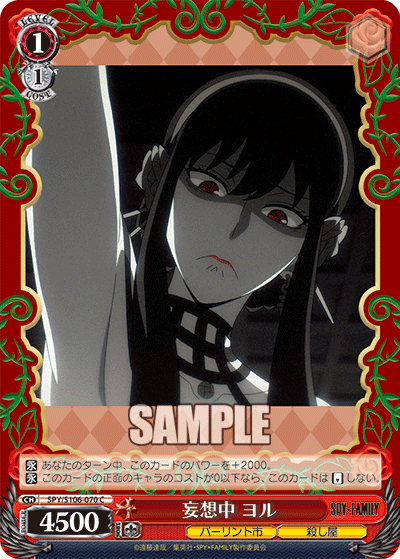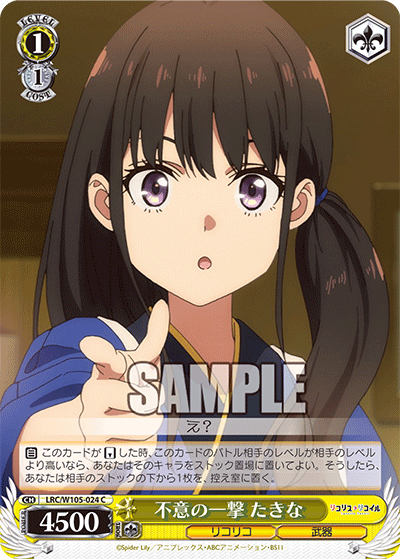1/1s have always been a little awkward to slot into decks. Primarily, one of the main concerns is the lack of and precious resource known as stock. In the modern metagame, where turns are precious and the amount of soul in the game is numerous, the cost of a 1/1 can be difficult to consider, especially early on. Modern cards have enormous player turn power lines, making traditional beatsticks less appealing. Yet, at the same time, if your opponent is unable to run over the card, you may have a persistent long-lasting threat that saves you resources in the long term.



LL/WE24-42C “SUNNY DAY SONG”西木野 真姫 (center)
RZ/S116-034S-SR 騎士叙勲の儀式 エミリア (right)
Traditional 1/1 profiles were usually one of two categories, either a large beatstick with some amount of self-protection or providing support in front. Typically, the general level assist was something that was more of a level two profile, but as the game has progressed, this has become more of a level one standard at this point as well.
As stated in the beginning introduction, these 1/1 profiles can be very taxing in the early game when stock generation is quite low. Furthermore, these cards have to provide some amount of pay-off, usually surviving until your next turn or creating value in the long run with some sort of filtering ability. There is one exception to this rule as that of standby since you effectively cheat the costs and do not need to have these cards in hand since they come out for “free” from the waiting room. One common trick is to have something of a mill profile or to discard the 1/1 early and then use a standby trigger to bring that card out.


LL/W68-076R “ことりのためにも”西木野 真姫 (right)
There are, as always, exceptions to these rules. Cards like the above (R.I.P. Hiori) are integral to certain builds. As such, depending on the specified deck build, you’ll have to run these cards as they are part of a certain deck core. Obviously, if the 1/1 is essential to a climax combo that you run, it will be an auto include. However, if this is not the case, you should think carefully whether or not this card is all that essential to your gameplay. Remember, you never really want to be drawing these 1/1s in hand, especially in the early game where you are looking for more costless alternatives to play.


Two other exceptions to the rule are shown above. Yor represents the infamous 1/1 that cannot be reversed by level zeros profile. These 1/1 beaters are virtually invincible up until the late game for many decks, depending on your local meta. There are also variants like this Milim that gains power, but isn’t invincible, which in its own right is arguably potentially more annoying or worse for your opponent. Once again, cards like Yor, however good they are, really depend on the card game environment at your local shop. The next profile is the more common Adachi profile. Adachi is interesting because it serves a very specific role that is rather unique. You can also opt to run level-downs or anti-change backups which I cover over in this post here. Adachi is usually the least costly of the three (arguably) since it is a one stock investment to get rid of an early-played threat. Depending on the match-up and situation, Adachi can easily level the playing field or deter your opponent’s threats.
As for how many of x card to run? That is ultimately your decision. With standby decks, given how they can “freely” spawn them as early as turn one, the 1/1 spawn may be a power move that can give you a significant boost in the beginning. Still, there is always the reality of drawing these cards or not being able to play them, let alone having your opponent overrun your card during their turn. It really depends on you. In an ironic twist of fate, sometimes I also include the rare single 1/1 beater as a way to pay out stock given how stock efficient modern cards are.